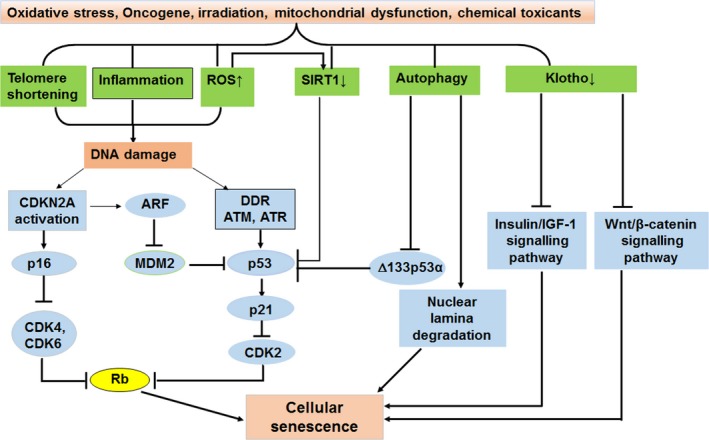Figure 1.

The mechanisms and related pathways of cellular senescence. A variety of stressors induce telomere shortening, increase ROS production, enhance inflammation and autophagy and decrease expression of SIRT1 and Klotho. Telomere shortening, ROS and inflammation usually lead to DNA damage that induces activation of p16/pRb and p53/p21 pathways. Activation of p16 and p21 leads to inhibition of cyclin‐dependent kinase (CDK) complexes and retinoblastoma protein (Rb); thus, senescence is present. Lower expression of SIRT1 causes activation of p53 and induces senescence. Decreased expression of Klotho leads to reduced inhibitory effects on insulin/insulin‐like growth factor‐1(IGF‐1) signalling and Wnt/β‐catenin signalling, resulting in cellular senescence. In addition, autophagy induces cellular senescence through targeting Δ133p53α or lamin B. ROS, reactive oxygen species; DDR, DNA damage response; MDM2, murine double minute 2
